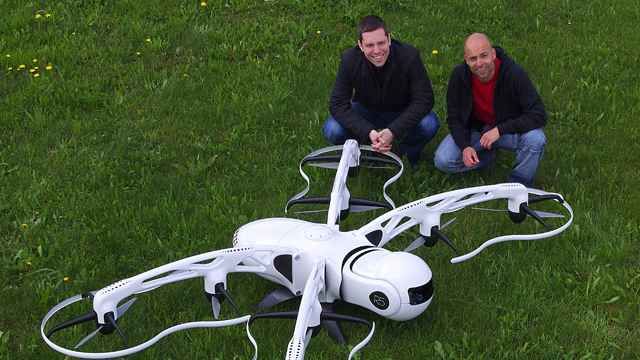MATLAB and Simulink provide capabilities to speed up development of unmanned aerial vehicles (UAV) and autonomous flight applications.
With MATLAB and Simulink, you can:
- Model and analyze a UAV system architecture
- Design flight control algorithms and simulate with a UAV plant model while including environmental factors
- Develop perception and motion planning systems for autonomous flight using prebuilt algorithms, sensor models, and apps for computer vision, lidar and radar processing, and sensor fusion
- Evaluate UAV performance in a closed-loop 3D simulation environment
- Automatically generate production code to deploy to flight controllers and onboard compute boards
- Connect to and control UAV from MATLAB and Simulink
- Analyze UAV flight telemetry and payload data
“Modeling and simulation with Simulink is the only way that we can get the results we need with the speed and quality that’s expected in our industry today. If we had to do everything by hand and rely solely on flight testing, we would require more bug fixing iterations and need more testing time per iteration. The problem would grow intractable. There’s no other way.”
Using MATLAB and Simulink
for UAV Development
UAV Platform Development
Using MATLAB and Simulink, you can model and analyze UAV system architectures while linking to requirements. You can design and test your flight control algorithms with plant models in simulation without hardware and reduce risk prior to flight testing. Production code for flight control software can then be automatically generated for hardware implementation. MATLAB and Simulink enable you to:
- Develop and examine UAV architecture models while linking to requirements
- Model UAV platforms, flight control systems, and environment effects to integrate and perform system-level simulations
- Automatically generate production code to implement onto microprocessors, FPGA, and GPU
- Connect to common UAV autopilots, such as PX4, and low-cost hardware like Raspberry Pi™
- Connect to UAV hardware using the Micro Air Vehicle Link (MAVLink) communication protocol and analyze flight telemetry data using interactive apps


Perception and Localization
For autonomous flight, UAV must have self awareness and situational awareness. MATLAB and Simulink provide prebuilt algorithms and sensor models for building object detection, mapping, and localization applications. Simulate IMU/GPS sensor readings to design fusion and localization algorithms to estimate the UAV pose. Use deep learning and machine learning to develop algorithms for object and people detection, or build applications for visual inspection using UAV. With MATLAB and Simulink, you can:
- Perform object detection and tracking, motion estimation, 3D point-cloud processing, and sensor fusion
- Use deep learning for image classification, regression, and feature learning
- Create a map of the environment using 3D Lidar SLAM and visual SLAM algorithms
- Design and simulate sensor fusion algorithms for localization
- Automatically convert algorithms into C/C++, fixed-point, HDL, or CUDA® code
Motion Planning and Control
Autonomous UAV must navigate the environment to complete a task by following a collision-free path. MATLAB and Simulink provide capabilities to build UAV missions and plan complex paths using prebuilt algorithms and block libraries. You can also perform initial evaluations of the UAV motion plan using built-in animation functionalities. Using MATLAB and Simulink, you can:
- Design and simulate UAV missions using UAV guidance models with waypoint following, orbit following, and path management
- Use path planners such as Hybrid A* and RRT* for UAV paths
- Perform trajectory optimization and control using model predictive control
- Apply reinforcement learning to generate UAV trajectories
- Animate UAV flight within MATLAB
Simulation-Based Testing
Using simulation lets you detect design errors in virtual testing, and it reduces risk and cost of hardware flight tests. You can integrate UAV plant models, flight controls, and autonomous flight algorithms in MATLAB and Simulink then execute and automate simulation testing. You can also synthesize sensor readings for closed-loop simulations of the autonomous UAV application in photorealistic simulation environments. MATLAB and Simulink enable you to:
- Simulate sensors for autonomous UAV applications such as GPS, INS, Lidar, and camera
- Create UAV scenarios and simulate in a cuboid simulation environment
- Integrate with Unreal Engine® by Epic Games® for photorealistic 3D simulations
- Simulate autonomous UAV applications by connecting to ROS/ROS2 and simulators like Gazebo
- Include cockpit instrument blocks to display flight status information in Simulink models
Explore Products




